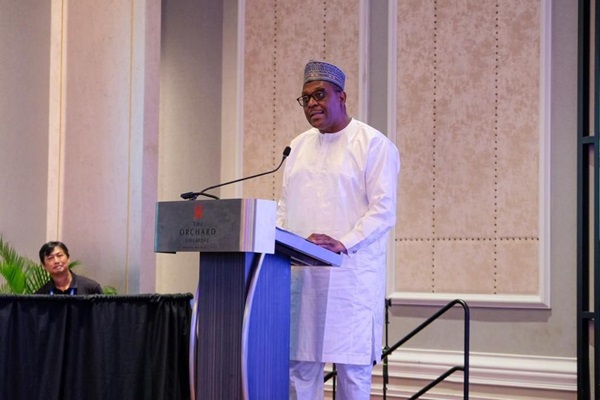
The Federal Government has reported significant progress in health sector reforms, particularly in promoting transparency through the integration of healthcare funds into the Treasury Single Account (TSA) for enhanced accountability.
Minister of Health and Social Welfare, Prof. Muhammad Pate disclosed this during an interview with journalists at the quarterly meeting of the ministerial oversight committee (MOC) for the Basic Healthcare Provision Fund (BHCPF).
The BHCPF, a cornerstone of Nigeria’s drive toward Universal Health Coverage (UHC), has been instrumental in improving access to quality healthcare, especially for vulnerable populations. Established under the National Health Act of 2014, the fund is supported by at least one per cent of the Consolidated Revenue Fund (CRF) and contributions from development partners.
Pate emphasised that the BHCPF has undergone several reforms to bolster transparency, efficiency, and effectiveness.
“Since its inception, the fund has been refined through strategic revisions, including the 2018 Operations Manual and the 2020 Guideline,” he said.
Following a retreat in July 2023, Pate explained, it became apparent that the Fund needed to be realigned with emerging health sector reforms, leading to the introduction of the BHCPF 2.0 Guideline. This revised framework, he noted, incorporates lessons from earlier phases and aims to enhance transparency, equity and collaboration within the health sector.
The minister outlined that the disbursement of funds is managed through four key channels—the National Health Insurance Authority (NHIA), the National Primary Health Care Development Agency (NPHCDA), the National Emergency Medical Treatment Committee (NEMTC) and the Nigeria Centre for Disease Control (NCDC). These agencies ensure that resources are allocated effectively to improve healthcare access, reduce maternal and child mortality, and strengthen health systems.
Pate pointed out that the reforms are already yielding positive results, especially for underserved populations in rural areas. “We’ve seen an increase in the number of primary healthcare centres offering quality services, along with a reduction in maternal and child mortality rates in areas where BHCPF funding has been properly utilised,” he noted.
Despite these achievements, the minister acknowledged challenges such as delays in fund disbursement, adding that efforts are underway to resolve these issues. A sub-committee within the MOC has been established to ensure smoother implementation of reforms, with a report expected in two weeks.
During the eighth MOC meeting, key documents were adopted, including the revised BHCPF 2.0 Guideline, an accountability framework, and the approval of ₦12.911 billion for disbursement to the NHIA, NPHCDA, NCDC and NEMSAS for the fourth quarter of 2024.
The minister underscored the importance of stakeholder collaboration in ensuring the success of the reforms. “We are working closely with state governments, civil society organisations (CSOs) and international partners like the World Health Organization (WHO) to ensure that the revised guidelines align with our broader health sector reform agenda.”
Additionally, he introduced the Ministerial Dashboard, a new tool designed to improve transparency and enable real-time monitoring of health programs. “This dashboard will track the implementation of health programs and allow us to swiftly address any issues that arise,” he said.
Looking ahead, the next MOC meeting, scheduled for December, will focus on further consultations with subnational stakeholders and planning for disbursements in the first quarter of 2025.
Pate reiterated that the BHCPF 2.0 Guideline would be reviewed every five years to ensure its continued relevance and alignment with Nigeria’s evolving health needs.
As Nigeria advances toward achieving Universal Health Coverage, the Federal Government remains committed to transparency, efficiency and accountability in managing healthcare funds. The adoption of the revised BHCPF 2.0 Guideline and the Ministerial Dashboard is expected to significantly improve the delivery of quality healthcare services to the country’s most vulnerable populations.

